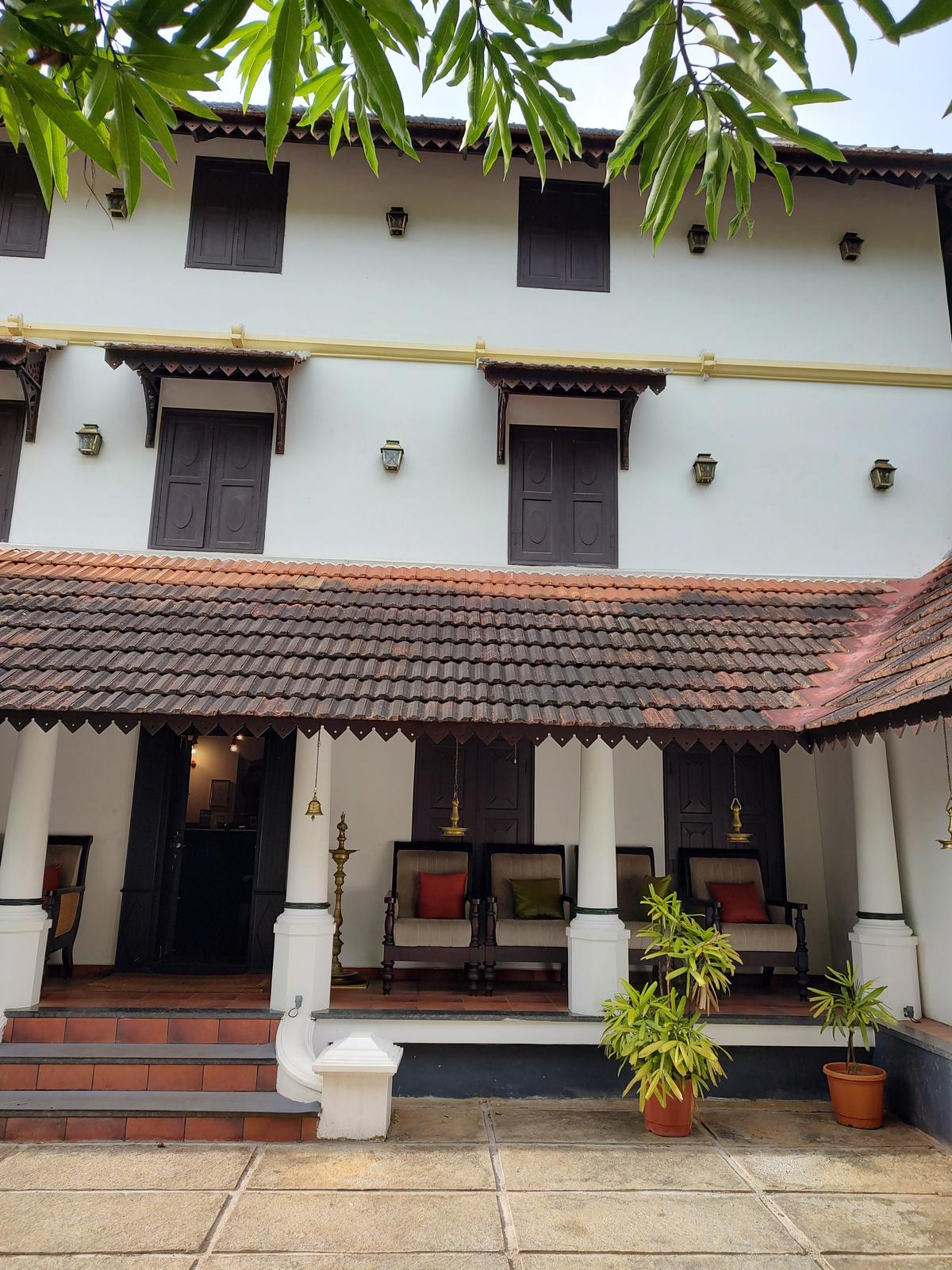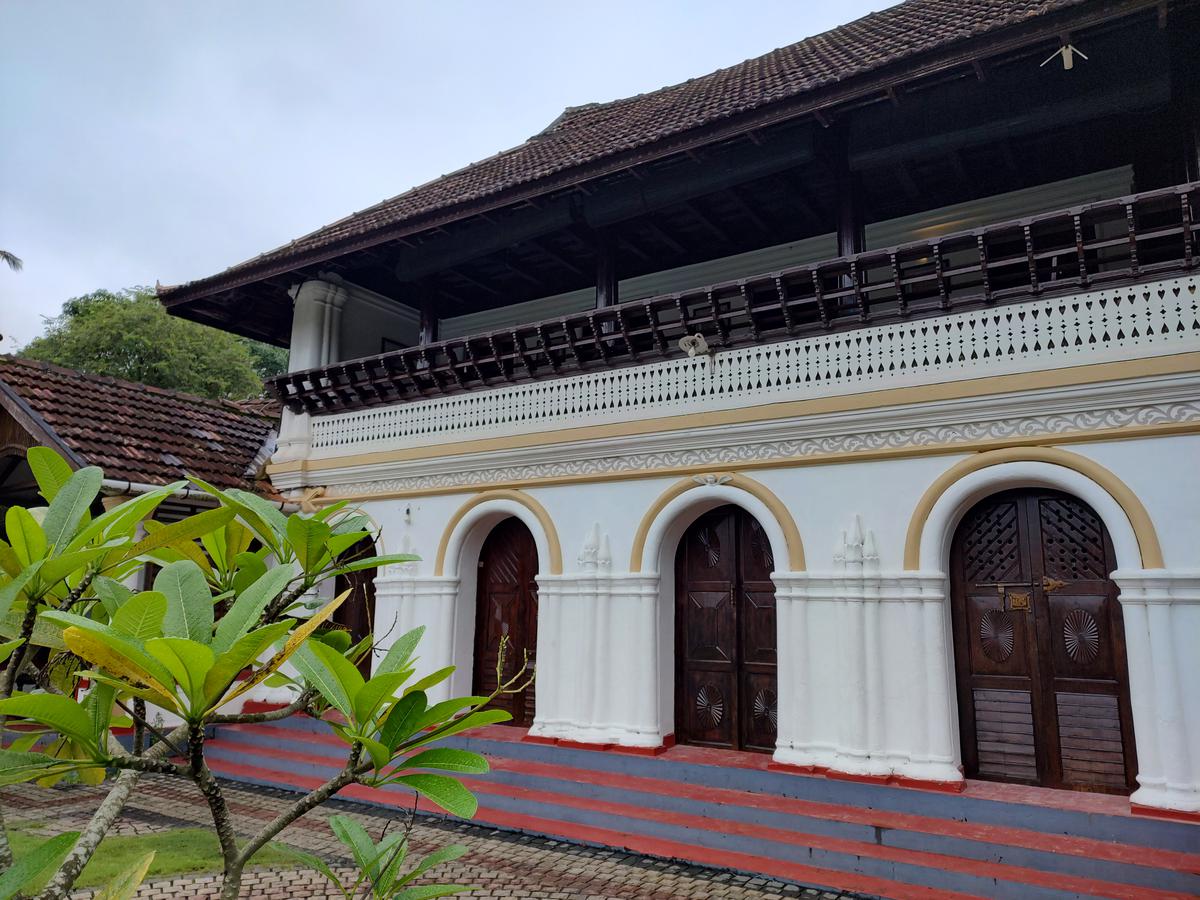The 300-year-old Sankaramangalam Theravada in Pathanamthitta has opened its doors to hospitality at Project Dharani, a unique initiative that documents it and the intangible heritage associated with it.
The 300-year-old Sankaramangalam Theravada in Pathanamthitta has opened its doors to hospitality at Project Dharani, a unique initiative that documents it and the intangible heritage associated with it.
In the neighbourhood, guided by modern construction guidelines, stands 300-year-old Sankaramangalam Theravada. Built on the principles of Kerala architecture, this minimalist and serene home is situated close to the Manimala River in the lush green Eraviperur in Pathanamthitta.
Recently the doors of Tharavadu were opened for Project Dharani, an initiative started by a group of young architects to link architecture with responsible tourism. Dharani aims to bring travelers interested in architecture and micro-culture to such places across Kerala and to document the assets and intangible heritage associated with it.
“Since it aims to create awareness about heritage conservation and make such properties viable, what can be a platform through which we can help such properties survive, document them and experience living in them? Can you do it?” Says Gisny George Kurien, who co-founded the initiative along with architects Lis Anne Tom, Suchitra C and Akash Puthaparambil.
The architect and founder of Dharani with a group of travelers
The four drew ideas from their experiences in the field of heritage conservation when they looked at the large-scale demolition of heritage structures and the loss of micro-culture, insensitive restoration and damage from reckless tourism. Along with their love for sustainable architecture and lifestyle, they also share a common love for travel. The enterprise was registered as a trust in 2018.
During Kerala flood rehabilitation, Gisney and Liss worked extensively with home rescue teams in Alappuzha and the central Kerala belt. During this time he met many non-architects who were passionate about preserving culture and heritage. “Ideally people should live in these homes, but most heritage property owners consider the spaces a liability. We wanted to make our project a platform for such properties.”

Thirukochi Residency, Kurumassery
George Kuruvilla, whose ancestors built Sankaramangalam in 1704, says the house is ready to host guests. “The house has historical value. There is a book on its history and occupants. As a family we could never think of destroying our heritage. Titus Sankaramangalam says that his grandfather, the seventh generation of the family, was born in the house. The home’s restoration took place three years ago after a carpenter agreed to restore it with the same materials and style as before. Family members, who are now spread across the globe, use it whenever possible.
“We have identified more than 10 such heritage properties,” says Liss, who teaches architecture and planning at NIT, Kozhikode. The properties identified by the group are Mitra Niketan in Idukki, Kenoth Mana in Kannur and a homestay in Vagamon.
The idea of Dharani was first introduced to students of architecture in colleges and one of the first groups was from Sigma in Kanyakumari. “As we’re popularizing the concept, we’ve kept tariffs low,” Liss says. The cost of a three day-four night journey is ₹3,950. “We encourage the use of public transport and the food is basic but healthy. The facilities are not five star or three star but they are clean and comfortable. Most of our guests believe in responsible tourism and so this model works well.” Her Bangalore-based partner Suchitra C spreads the concept to colleges and handles social media Instagram and FB pages.

Tharavadu Heritage Home, Kumarakomi
An executive of an education start-up, G. For Shweta, the quest “satisfied my thirst to work in sustainability. Understanding a destination through architecture is unique. No amount of self-education can give me the kind of experience and education that I had.” ” She participated in the making of videos, taking pictures and measuring the house. Non-architect guests contribute according to their field, Gisney says and cites examples of a graphic artist who painted the building and a teacher who associated the house with literary quotes. “All these contributions – architectural drawings, literary narratives – will be part of the archival records for later reference,” she says, explaining that the first two days of the voyage are marked for serious documentation, while the final days are a heritage holiday. is for get away. “We do local trails, which are still not under public glare. So they are fresh and new for travelers,” says Liss.
After savoring the old-world grandeur of Sankaramangalam, the group moved to Thirukochi in Angamaly to relax, rewind, and bond over an old-fashioned lifestyle.